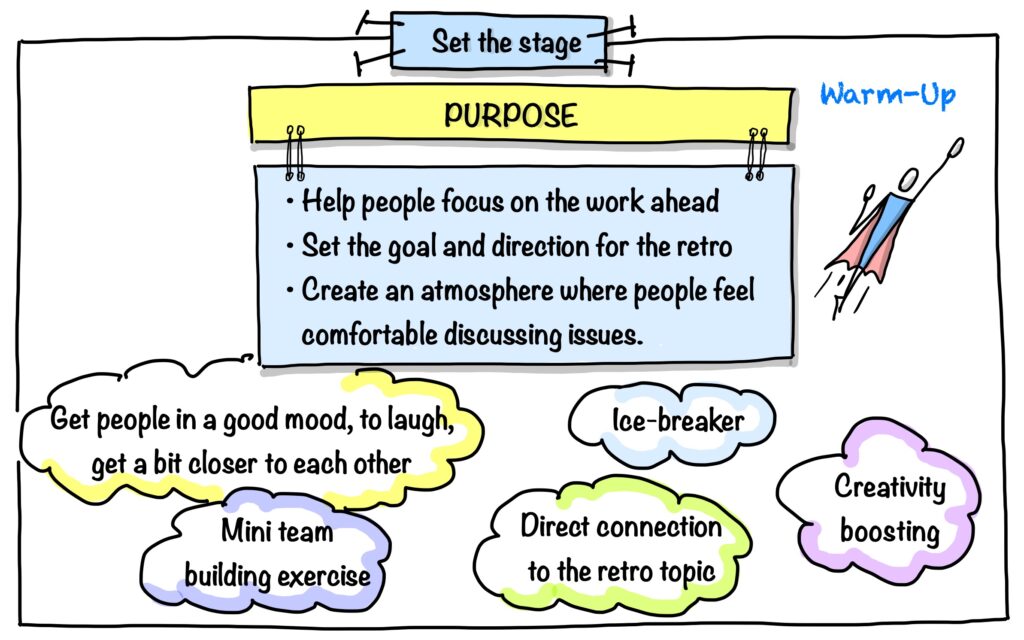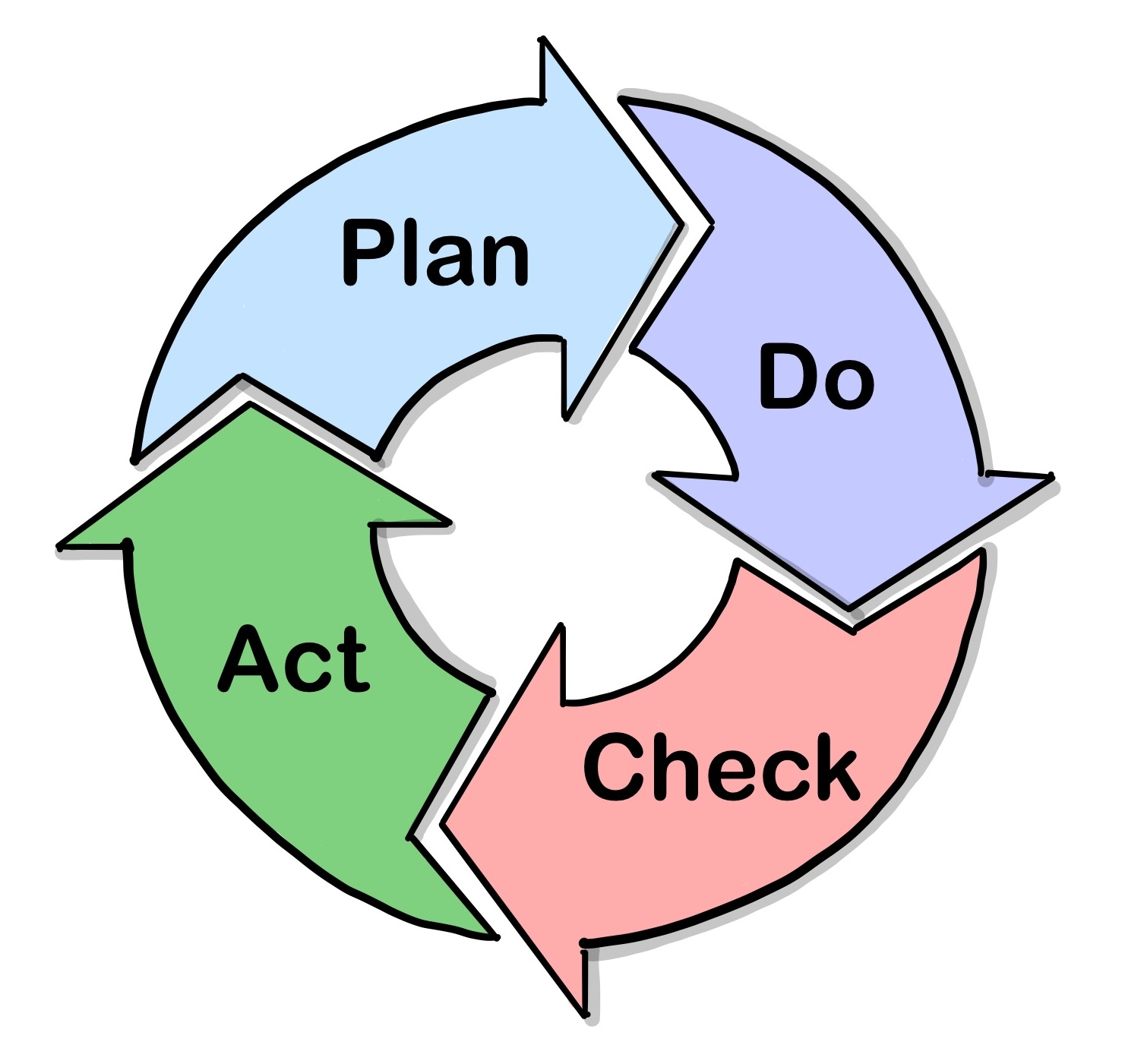The first stage of the retrospective is Set The Stage, and this step is often omitted, as many teams want to get “straight to the point”. Meanwhile, it helps people switch off from previous tasks, focus on upcoming work, start feeling more comfortable and relaxed, get closer to each other, maybe have some laughs and start looking forward to further work.

Depending on your goal for the retro, you could select an activity best suitable for this goal:
- Some mini-teambuilding activities for the newer team
- Asking personal questions (examples of questions)
- Speed Networking
- Constellation exercise – from a seminal Coaching Agile Teams book by Lyssa Adkins – you can ask both personal and work-related questions
- Round of Admiration – Participants express what they admire about one another
- Unlikely Superheros – Imagine yourself as a superhero! What is your superpower?
- Know your neighbour – How did your right neighbour feel during the iteration
- Direct connection to the retro topic
- “Assess how the last iteration was”
- On a scale 1-10
- Emoticons
- Weather metaphors
- “Assess how the team demonstrates those behaviours”
- Three Words – Everybody sums up the last iteration in 3 words
- Postcards – Participants pick a postcard that represents their thoughts / feelings
- “Assess how the last iteration was”
- Check-in
- “How are you feeling now?”
- “How is your battery?”
- Explorer/Shopper/Vacationer/Prisoner – How do participants feel at the retro: Explorer, Shopper, Vacationer, or Prisoner?
- Weather Report – Participants mark their ‘weather’ (mood) on a flipchart
- Happiness Histogram – Create a happiness histogram to get people talking
- Creativity boosting activity
- “If our team were a vehicle, what kind of vehicle it would be?”
- “If our team were an animal…”
- Draw the Iteration – Participants draw some aspect of the iteration
- Greetings from the Iteration – Each team member creates a postcard about the last iteration
- Or just some “silly” ice-breaker to lighten up the mood
Usually, it should be quite short, up to 5-10 minutes or even shorter. The main thing is that everybody would say at least one word (“Describe the last iteration in one word”) – it makes people be much more vocal during the upcoming activities.
You could always find inspiration in a wonderful retro activities collection arranged by different stages on Retromat.
All Retrospective Phases:
5 Phases of Retrospective
Phase 1: Set The Stage
Phase 2: Gather Data
Phase 3: Generate Insights
Phase 4: Decide What To Do
Phase 5: Close The Retrospective
